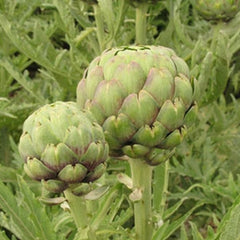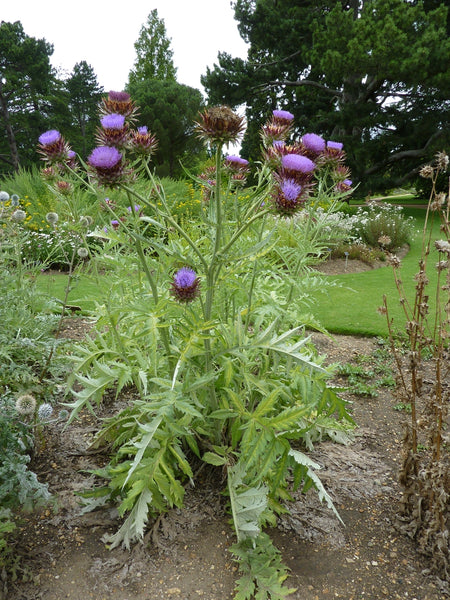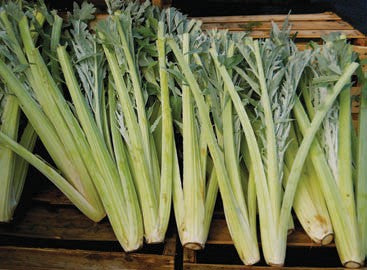Cardoon
Cynara cardunculus
HOW TO GROW CARDOON
Sow indoors 8 weeks before you intend to transplant- ideally 2 weeks after last frost date. Plants prefer rich, well drained soil and full sun. Allow 4 feet between plants. Stalks are ready for harvest in 115 days. Hardiness zones 7-10. Perennial.
Planting Depth 1/2"
Soil Temp. Germ. 55-80
Days to Germ. 7-14
Plant Spacing 4’
Row Spacing 4’
Days To Maturity 115
Moist Well Drained Soil
Planting Depth 1/2"
Soil Temp. Germ. 55-80
Days to Germ. 7-14
Plant Spacing 4’
Row Spacing 4’
Days To Maturity 115
Moist Well Drained Soil
- 20 Seeds$3.90
Closely related to the artichoke, this Mediterranean vegetable is grown for its thick, edible leaf stalks. Stalks require blanching (wrap in fabric to keep light off of them) for the last four weeks before harvest to develop a delicate texture. The large stalks resemble celery and can be served steamed or braised. F...
Closely related to the artichoke, this Mediterranean vegetable is grown for its thick, edible leaf stalks. Stalks require blanching (wrap in fabric to keep light off of them) for the last four weeks before harvest to develop a delicate texture. The large stalks resemble celery and can be served steamed or braised. Flavor is similar to artichokes; slightly bitter. Used in traditional Italian soups, Spanish stews, and in dishes prepared by the Romani peoples. In Portugal, cardoons are used as a vegetarian source of rennet for cheesemaking. Besides a food source, cardoons are used in creative flower arrangements, landscaping, biodiesel fuel production, and to make artichoke oil. Tags: Size: Large, Season: Spring Summer Fall.
Native to the western and central Mediterranean region, from Morocco and Portugal east to Libya and Greece, and north to Croatia and Southern France. Considered a weed nowadays in Australia, California, and the pampas of Argentina. Adapted to dry climates. Different from the artichoke in that the cardoon was selected for edible leaf stems, not edible large flower buds.
Native to the western and central Mediterranean region, from Morocco and Portugal east to Libya and Greece, and north to Croatia and Southern France. Considered a weed nowadays in Australia, California, and the pampas of Argentina. Adapted to dry climates. Different from the artichoke in that the cardoon was selected for edible leaf stems, not edible large flower buds.
Learn More
Meet Your Farmer
We promote fair trade, organic practices and environmental responsibility throughout the Restoration Seeds supply chain. Below are the family farmers and seed suppliers who bring our open pollinated seeds to you.
Waterleaf Farm
Organically Grown
Seed grower since 2008


Growing in Oregon since 2008Waterleaf Farm is a small sustainable flower farm growing on Southern Oregon Land Conservancy (Eagle Mill Farm). Mostly a fresh cut flower farm, Melanie also grows herbs and has been saving seeds from over 30 varieties of crops for years. Waterleaf Farm also offers workshops to deepen in connection with the plants and U-pick flowers.
Reviews



